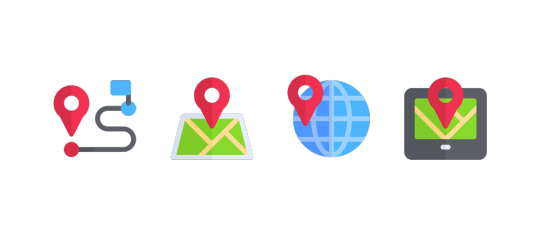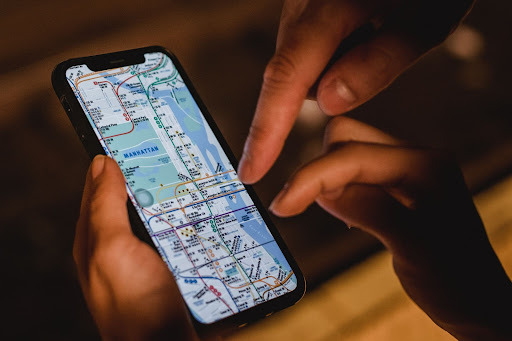Don't wanna be here? Send us removal request.
Text
Understanding IP Address Whitelisting and Its Role in Geo Location IP REST APIs
Introduction:
In the realm of modern digital security, IP address whitelisting stands as a robust and indispensable safeguard. It is a potent defense mechanism used to control access to networks and resources, ensuring that only trusted entities are permitted while unauthorized access is effectively blocked. In this article, we will delve into the concept of IP address whitelisting and explore its significance, particularly in the context of Geo Location IP REST APIs.

1. IP Address Whitelisting Demystified:
IP address whitelisting is a security practice that enables organizations to specify a list of trusted IP addresses or ranges of addresses that are allowed to access their resources or services. Essentially, it creates a virtual "whitelist" of permitted entities, granting them access while denying entry to all others.
2. The Role of IP Address Whitelisting in Geo Location IP REST APIs:
Geo Location IP REST APIs rely on the principle of IP address whitelisting to enhance security and accuracy. Here's how it comes into play:
a. Enhanced Security: By whitelisting IP addresses, Geo Location IP REST APIs ensure that only authorized and reputable sources can access sensitive geographical data. This adds an extra layer of protection against potential threats.
b. Controlled Access: Geo Location APIs often provide valuable location-based information. IP address whitelisting enables organizations to tightly control who can access and utilize this data, safeguarding its integrity.
3. How Does an IP Address REST API Get an IP Address?
Geo Location IP address REST APIs retrieve a user's IP address when a request is made to the API endpoint. The API extracts the user's IP address from the request headers, allowing it to identify the user's approximate location based on this information.
4. Implementing IP Address Whitelisting for Geo Location IP REST APIs:
a. Determine Trusted Sources: Identify the IP addresses or ranges that should be whitelisted, such as known partners, trusted users, or specific devices.
b. Configure Whitelist Rules: Implement rules in your Geo Location IP REST API that restrict access to only the whitelisted IP addresses. Any request originating from a non-whitelisted IP address is automatically denied.
c. Regularly Update and Monitor: It's crucial to keep the whitelist updated as IP addresses may change. Regularly monitor access logs and review the effectiveness of your whitelisting strategy.
Conclusion:
IP address whitelisting plays a pivotal role in securing Geo Location IP REST APIs, ensuring that only trusted sources can access and utilize valuable location-based data. By implementing this robust security measure, organizations can protect their resources, maintain data integrity, and enhance the overall security of their applications and services. As the digital landscape continues to evolve, IP address whitelisting remains a vital component of a comprehensive security strategy, especially for Geo Location IP REST APIs where data accuracy and privacy are paramount.
0 notes
Text
Elevate Your Location Tracking with Google's GeoLocation API: Here's Why
In today's dynamic landscape, harnessing location data is not just an option but a necessity. Whether you're a business aiming to streamline operations or a developer seeking to enhance user experiences, the choice of a Location Tracking API plays a pivotal role. Among the array of options available, the Google GeoLocation API emerges as a standout performer. In this article, we delve into the compelling reasons why embracing the Google GeoLocation API can be a game-changer for your location tracking needs.

1. Precision Beyond Compare
The paramount reason to embrace the Google GeoLocation API is its unmatched precision. Google's unwavering commitment to mapping and geospatial technologies has placed it at the forefront of the industry. Leveraging Google's extensive database of geographical data ensures that your location information is nothing short of pinpoint accuracy. Whether you're pursuing real-time tracking or accessing historical location data, the Google GeoLocation API consistently delivers, empowering you to make well-informed decisions.
2. Geocoding Mastery
Beyond real-time location data, the Google GeoLocation API offers an extensive range of geocoding capabilities. Geocoding, the art of transforming addresses into precise geographic coordinates, is a forte of this API. With a simple API call, you can effortlessly convert addresses into latitude and longitude coordinates, simplifying tasks like route optimization and location-based marketing. This feature is a boon for businesses reliant on location data for their services.
3. Effortless Integration
Seamless integration is a linchpin in selecting a location tracking solution, and the Google GeoLocation API excels in this regard. It seamlessly integrates with a multitude of programming languages and platforms, ensuring accessibility for developers of all backgrounds. Be it web applications, mobile apps, or desktop software, incorporating this API into your project is a breeze. This user-friendly integration empowers you to harness the potential of location data swiftly and efficiently, minus the complexity.
4. Fiscal Prudence
The Google GeoLocation API is not only a powerhouse of features but also a model of cost-efficiency. Its pricing plans are highly competitive, featuring a free tier with generous usage allowances. This means you can embark on your location data journey without a substantial upfront investment. As your needs evolve, Google offers flexible pricing options that cater to businesses of all sizes, ensuring that you only pay for what you use.
5. Robust Support and Documentation
Google's developer-centric approach is exemplified by the GeoLocation API, which boasts comprehensive documentation, sample code, and a thriving developer community. Whether you're a seasoned developer or a novice, you'll find the resources you need to make the most of this API. Moreover, Google provides exceptional customer support, guaranteeing prompt assistance should you encounter any issues or obstacles during implementation.
Conclusion
To sum it up, the Google GeoLocation API is a compelling choice for businesses and developers seeking precise and efficient location tracking capabilities. Its unparalleled accuracy, geocoding prowess, seamless integration, cost-effectiveness, and robust support make it the ultimate tool for location-based services. Whether you're elevating customer experiences, optimizing logistics, or crafting innovative location-aware applications, the Google GeoLocation API is your key to unlocking the full potential of location data in your endeavors. By embracing this API, you're not just tracking locations; you're charting a course toward excellence.
0 notes
Text
Unlocking Global Reach: Localizing Your React Native Mobile App with IP Geolocation API
As the world becomes increasingly interconnected, mobile app developers face a compelling challenge: reaching and engaging a diverse global audience. App localization stands as a potent strategy to meet this challenge head-on, significantly boosting user engagement and overall satisfaction. At the heart of effective app localization lies geolocation, the process of pinpointing a user's geographical location. This is where IP geolocation APIs come into play, with Ipstack serving as a prime example.
In this article, we'll embark on a journey to demystify the art of app localization using IP geolocation APIs within a React Native framework. By integrating these APIs, developers can offer personalized experiences to users worldwide. We'll start our journey by unraveling the fundamental concepts behind IP geolocation and how it seamlessly functions. Additionally, we'll navigate the critical considerations that guide the selection of an IP location API aligned with your app's unique demands.

Understanding IP Geolocation
Before diving into the practical implementation, let's grasp the essence of IP geolocation. At its core, IP geolocation is the process of determining a user's geographical location based on their IP address. This powerful technique enables apps to adapt their content, language, and functionality to cater to users from different regions.
IP geolocation typically provides valuable information such as the user's country, city, time zone, and sometimes even more granular details. By leveraging this data, you can create a tailored user experience that resonates with your global audience.
Choosing the Right IP Geolocation API
Selecting the appropriate IP geolocation API is a crucial first step in your localization journey. Here are some factors to consider:
Accuracy: Ensure the API provides accurate location data. Precision matters, especially when personalizing user experiences.
Coverage: Check if the API covers a wide range of countries and regions. You want to accommodate users from various locations.
Reliability: Look for an API with a reliable uptime and minimal downtime. Consistency is key in localization.
Ease of Integration: Opt for an API that offers straightforward integration with React Native. A well-documented API can save you time and headaches.
Pricing: Evaluate the pricing model of the API. Some APIs offer free tiers with limitations, while others require a subscription.
Once you've chosen the right IP geolocation API for your project, it's time to put theory into practice.
Practical Implementation
Setting Up Your React Native Project
Create a New React Native Project:Use the react-native-cli or Expo CLI to initiate a new React Native project. You can choose a blank template or one that suits your specific needs.
Install Dependencies:Depending on your chosen IP geolocation API, install the necessary packages for making HTTP requests. Popular choices include Axios and the built-in fetch API.
Integrating the IP Geolocation API

Get an API Key:Sign up for an account with your chosen IP geolocation service provider and obtain an API key. This key is essential for making requests to their service.
API Request:Implement the code to fetch the user's location data using the API key. This typically involves making an HTTP request to the provider's endpoint.
Parsing the Response:Extract the user's location information from the API response. Common data points include the user's country, city, and time zone.
Adapting Your App for Localization
Create Localization Resources:Prepare localization files for each language or region you want to support in your app. These files should contain translated text, localized images, and any other region-specific resources.
Localization Logic:Write logic in your React Native app that reads the user's location data and selects the appropriate localization resources based on that information. Libraries like react-native-localize can be helpful for this task.
Update User Interface:Use the localized resources to update your app's user interface. This includes displaying text in the user's language, using region-specific date and time formats, and adjusting layouts if necessary.
Testing and Debugging
Thoroughly test your localized app to ensure that all elements display correctly and that the user experience remains seamless. Be prepared to handle situations where the IP Geolocation API may fail to provide accurate data. Implement a fallback mechanism that allows users to manually select their preferred language and region within the app settings.
Conclusion
App localization is not just about translating text; it's about providing a tailored user experience that transcends linguistic and cultural barriers. By harnessing the power of IP geolocation APIs in React Native, you can automatically adapt your app's content and settings based on the user's geographical location. Follow the steps outlined in this guide, choose the right API, and embrace the potential to connect with users worldwide on a deeper level. With IP Geolocation, localization becomes a seamless and dynamic part of your mobile app strategy.
0 notes
Text
Harnessing Accurate Location Data for Enhanced User Experiences
In today's digital age, accurate location data plays a pivotal role in shaping the way we interact with technology. Geolocation APIs, with their ability to provide precise location information, have become indispensable tools for developers and businesses seeking to deliver tailored and location-aware user experiences. In this article, we will explore the importance of accurate location data in Geolocation APIs, delve into the diverse use cases for obtaining user positions, and learn how to harness the power of Geocoding API for free in Python.
The Importance of Accurate Location Data in Geolocation APIs
Accurate location data is the cornerstone of Geolocation APIs. Here's why it matters:
Enhanced Personalization: Accurate location data enables applications to provide users with location-specific content and recommendations. Whether it's suggesting nearby restaurants, local events, or relevant products, accurate location information leads to more personalized user experiences.
Precise Navigation: In mapping and navigation applications, accuracy is paramount. Geolocation APIs provide the precise coordinates needed for turn-by-turn directions, ensuring users reach their destinations efficiently.
Geofencing Accuracy: Geofencing, which triggers actions or alerts based on a user entering or exiting a specific area, relies on accurate location data. This is crucial for applications ranging from security to location-based marketing.
Real-Time Asset Tracking: For logistics, transportation, and asset management industries, knowing the precise location of vehicles, shipments, or assets in real-time is essential for optimizing operations and ensuring safety.
Use Cases for Geolocation APIs to Get User's Position
Geolocation APIs offer a plethora of use cases for obtaining a user's position:
Mapping and Navigation: Geolocation APIs power mapping and navigation services, enabling users to find directions, locate nearby points of interest, and explore interactive maps.
Location-Based Content: Businesses can use Geolocation APIs to deliver location-specific content, such as local news, weather updates, and promotions tailored to a user's current location.
Geofencing and Alerts: Geofencing capabilities allow applications to create virtual boundaries and send notifications or trigger actions when a user enters or exits predefined areas. This is valuable for security, marketing, and location-based notifications.
Real-Time Social Interaction: Apps can use location data to connect users with others nearby, facilitating social interactions, networking, and dating.
Emergency Services: Geolocation APIs are vital for emergency services, enabling accurate location information to be shared with first responders during crises.
How to Use Geocoding API Free in Python
Geocoding is the process of converting addresses into geographic coordinates (latitude and longitude) that can be used with Geolocation APIs. Here's how to use a Geocoding API for free in Python:
Choose a Geocoding API: There are several free Geocoding APIs available, including Google Geocoding API, OpenCage Geocoder, and Nominatim (OpenStreetMap). Sign up for an API key from your chosen provider.
Install the Required Library: Depending on the API provider, you may need to install a Python library. For example, for Google Geocoding API, you can use the geopy library, while for Nominatim, you can use the geopy.geocoders.Nominatim class.
Import the Library and Authenticate: Import the library in your Python script and authenticate with your API key.
Perform Geocoding: Use the Geocoding API to convert addresses into coordinates. For example, with the geopy library, you can call the geocode() function and pass the address as a parameter.
Retrieve and Use Data: Once you've obtained the coordinates, you can use them in your application as needed. For instance, you can display a location on a map or calculate distances.
Remember to check the usage limits and terms of service for the Geocoding API provider you choose, as free usage may come with certain limitations.
Conclusion
Accurate location data is a driving force behind the functionality and personalization of modern applications. Geolocation APIs offer a wealth of opportunities to obtain user positions and enhance user experiences. Whether it's for mapping, geofencing, real-time tracking, or location-based content delivery, these APIs empower developers to create applications that are not just digital but deeply connected to the physical world. And with the availability of free Geocoding APIs in Python, developers can easily access the power of location data to enrich their applications and services.
0 notes
Text
The Future of Geolocation by IP Address: Trends and Innovations
Geolocation by IP address has come a long way since its inception, and it continues to evolve rapidly, shaping the digital landscape in profound ways. In this article, we'll delve into the latest trends and innovations in geolocation technology, highlighting how it is poised to impact various industries in the coming years.

1. Enhanced Precision with 5G
The rollout of 5G networks is poised to revolutionize geolocation accuracy. With its higher bandwidth and lower latency, 5G will enable more precise location tracking, particularly in urban environments. This technology will not only benefit navigation and logistics but also enhance augmented reality (AR) and virtual reality (VR) experiences, making them more immersive and location-aware.
2. IoT and Geofencing
The Internet of Things (IoT) is creating new opportunities for geolocation applications. Geofencing, a technique that establishes virtual boundaries around physical locations, is becoming increasingly popular. IoT devices equipped with geolocation capabilities can trigger actions or notifications when they enter or exit predefined areas. This is being used in logistics to track shipments, in smart homes for security and automation, and even in marketing to send location-based offers to consumers.
3. Indoor Geolocation
While GPS is effective outdoors, it falls short when it comes to indoor locations. Innovations in indoor geolocation technologies, such as Bluetooth beacons and ultra-wideband (UWB) technology, are addressing this limitation. Indoor geolocation is revolutionizing industries like retail, healthcare, and hospitality by enabling personalized experiences, asset tracking, and improved navigation within large buildings.
4. Geospatial Data Fusion
The integration of various data sources is enhancing the accuracy and utility of geolocation information. Combining GPS data with data from Wi-Fi networks, cell towers, and sensors allows for more reliable and precise location determination. This fusion of data is particularly valuable in urban environments with complex infrastructure.
5. Privacy-Preserving Geolocation
As concerns about privacy grow, there is a growing emphasis on privacy-preserving geolocation solutions. Techniques such as differential privacy and on-device processing are being employed to ensure that user location data remains confidential while still enabling valuable geolocation-based services. Striking the right balance between convenience and privacy will be crucial in the future of geolocation.
6. Geolocation in Healthcare

Geolocation technology is making significant inroads into the healthcare sector. Wearable devices with built-in geolocation capabilities can track patients' movements and vital signs in real-time, facilitating remote monitoring and emergency response. Additionally, geolocation can assist in contact tracing during pandemics, helping to curb the spread of infectious diseases.
7. Geolocation in Autonomous Vehicles
The automotive industry is leveraging geolocation technology to advance the development of autonomous vehicles. Precise and real-time geolocation data is critical for self-driving cars to navigate safely and efficiently. These vehicles rely on a combination of GPS, lidar, radar, and high-definition maps to make split-second decisions on the road.
8. Geolocation and Augmented Reality
Augmented reality (AR) is poised to benefit greatly from geolocation capabilities. AR apps can overlay digital information onto the physical world, and accurate geolocation data is crucial for aligning virtual objects with the real environment. This synergy is opening up new possibilities in gaming, tourism, education, and urban planning.
9. Climate and Environmental Monitoring
Geolocation API technology plays a pivotal role in climate and environmental monitoring. Satellites equipped with geolocation instruments provide valuable data for tracking changes in the Earth's climate, deforestation, and disaster management. Geolocation also aids in precision agriculture by enabling farmers to optimize resource usage based on location-specific data.
10. Geolocation in Smart Cities

Smart city initiatives are utilizing geolocation to improve urban planning and services. Real-time data from sensors and geolocation-enabled devices can optimize traffic management, waste collection, and energy usage. Additionally, geolocation can enhance public safety by enabling quicker emergency response and evacuation planning.
In conclusion, geolocation by IP address is on a trajectory of continuous growth and innovation. From the enhanced precision of 5G to the rise of indoor geolocation and privacy-preserving solutions, this technology is becoming increasingly integral to our digital lives. As geolocation continues to evolve, it will empower industries across the board, improving user experiences, enhancing safety and security, and contributing to a more connected and efficient world. Keeping an eye on these trends and innovations will be essential for businesses and individuals alike as we embrace the future of geolocation.
0 notes
Text
What factors should you consider when selecting the most suitable IP Geo API for your requirements?

Integrating Location Services API With Your Mobile App: A Step-by-Step Guide:
Most mobile applications today require accurate location data, but some developers struggle to obtain it efficiently. Integrating a location API can be the perfect solution. This step-by-step guide explores integrating an Ip Geo API into your mobile app.
Location APIs provide developers access to and control over location-related capabilities in their apps. GPS-based APIs use a device's GPS or wifi access points to deliver real-time location data, while geocoding APIs translate addresses into geographic coordinates and vice versa, enabling functions like map integration and location-based search.
When choosing a location services API, consider factors like reliability, accuracy, documentation, support, pricing, and usage restrictions.
Here's a step-by-step guide using the ipstack API:
Obtain an API key from ipstack after signing up for a free account.
Set up your development environment, preferably using VS Code.
Install the necessary HTTP client library (e.g., Axios in JavaScript, Requests in Python).
Initialize the API and make calls using the provided base URL and your API key.
Implement user interface components to display the data.
To maximize efficiency, follow best practices, like using caching systems, adhering to usage constraints, and thorough testing.
ipstack proves to be a valuable choice for geolocation functionality with its precise data and user-friendly API. Sign up and unlock the power of reliable geolocation data for your application.
1 note
·
View note